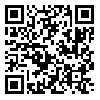Volume 22, Issue 6 (2022)
MCEJ 2022, 22(6): 79-94 |
Back to browse issues page
Download citation:
BibTeX | RIS | EndNote | Medlars | ProCite | Reference Manager | RefWorks
Send citation to:



BibTeX | RIS | EndNote | Medlars | ProCite | Reference Manager | RefWorks
Send citation to:
Farahbod F, Shahrabi Farahani A. Evaluation of Effective Parameters in Bonding Strength of Bars in Reinforced Concrete with Insufficient Development Length in Pullout Test. MCEJ 2022; 22 (6) :79-94
URL: http://mcej.modares.ac.ir/article-16-55397-en.html
URL: http://mcej.modares.ac.ir/article-16-55397-en.html
1- Assistant Professor of Road, Housing & Urban Development Research Center (BHRC) , f.farahbod@bhrc.ac.ir
2- Ph.D. Student of Earthquake Engineering of Road, Housing & Urban Development Research Center (BHRC)
2- Ph.D. Student of Earthquake Engineering of Road, Housing & Urban Development Research Center (BHRC)
Abstract: (895 Views)
The performance of steel rebars in reinforced concrete is always complicated and important. Each reinforced concrete element contains two parts, including concrete and steel rebars. Under severe forces, the behavior of reinforced concrete structures and their elements is dependent on the interaction between steel and concrete. Due to the composite nature of these structures, their performance is complex and might be studied in different aspects. Incorrect evaluation of this item will lead to the wrong design. Although this performance affects all parts of a concrete structure, development length and lap splice are the most significant parts. One of the common tests, in evaluating the steel reinforcing bars' performance, is the pullout test, however, there are deficiencies in different investigations. In this research, five pullout specimens were tested, containing four specimens with confined and one with unconfined concrete, which had three different bar sizes including 20, 22, and 25 mm. Tests were conducted on 300 mm cube specimens and 250 mm development length of steel rebars which was insufficient. Rebars with sufficient development length have a different performance. The testing method was monotonic and the compressive strength of concrete was 23 MPa. Normally two cracking and damaging mechanism is observed. It is pullout of rebar or splitting of concrete. In confined concrete pullout occurs, while in an unconfined specimen, splitting of the concrete takes place so the bonding strength and axial force tend to zero much faster. Using these results and results from other researches, some important parameters in the field of bonding and slippage of rebars, including compressive strength of concrete, rebar size, force direction (pulling or pushing), and confinement of concrete were investigated and some equations with high accuracy were proposed to generalize available results to desired results. For verifying and increasing the range of results, three valid kinds of research are used, which confirm the accuracy of results and equations. This study showed that the bonding strength would increase 20 percent by 50 percent increase in compressive strength of concrete. Moreover, by changing the bar diameter from 20 to 22 and 25 mm, for a constant compressive strength of concrete, bonding strength decreases 4.3 and 10.6 percent respectively. By using the proposed equation, maximum bond strength for different bar sizes may be evaluated. Besides, maximum bond strength is reduced up to 40 percent of a confined specimen, and the slippage corresponding to maximum bond strength is reduced 15 to 30 percent as the result of using unconfined concrete. In the same way, for the same bar diameter, pullout force reduced up to 40 percent. The slippage corresponded to maximum bonding strength is about 1.4 to 2 mm for confined concrete and 0.25 to 0.45 mm for unconfined concrete. Bond strength and slippage of rebars vary in compressive and pulling forces. This is due to the axial behavior of the rebar's head in compression. The compressive axial force of the bar may increase the bonding strength up to 10 percent, comparing to pulling axial force.
Keywords: bonding of concrete to bar, slippage of bars, confined concrete, bonding strength vs slippage diagram
Article Type: Original Research |
Subject:
Civil and Structural Engineering
Received: 2021/09/7 | Accepted: 2022/06/15 | Published: 2022/10/2
Received: 2021/09/7 | Accepted: 2022/06/15 | Published: 2022/10/2
Send email to the article author
| Rights and permissions | |
 |
This work is licensed under a Creative Commons Attribution-NonCommercial 4.0 International License. |








